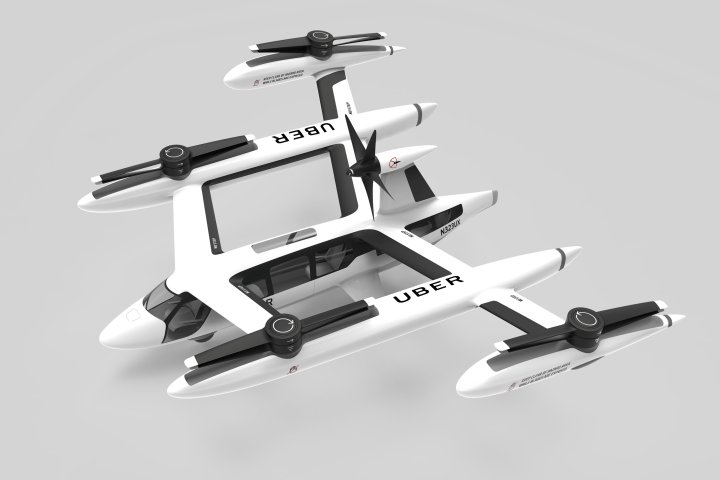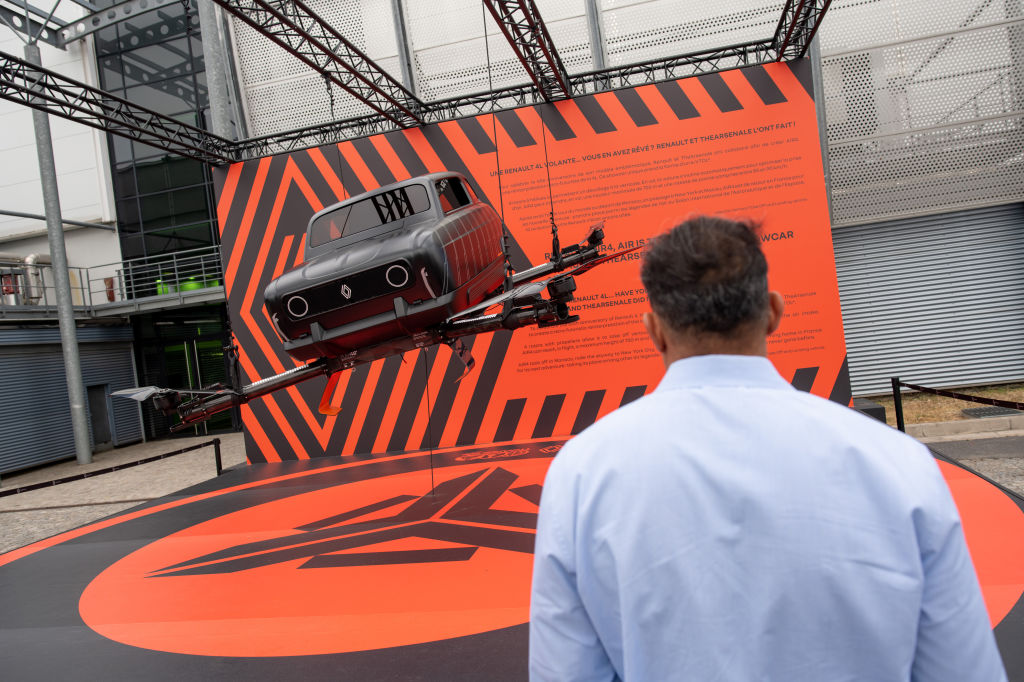LIVE SMARTER
Flying taxis could be zooming around your city in just a few years

Lightweight, urban-friendly aircraft are undergoing safety tests around the world in a race to roll out flying taxi services, and the early birds have their sights set on the middle of the decade.
The era of the flying taxi has begun. We may not yet have the Back to the Future levitating cars which popular science fiction has been fantasising about for as long as cars have been around, but lightweight personal aircraft capable of navigating urban areas already exist.
Several companies around the world have plans to roll them out as a paid public mode of transportation, and now the nature of the flying taxi industry is just a matter of efficiency, affordability and regulation.
What do flying taxis look like?
The Vertical Flight Society reports that there are over 700 designs of Electric vertical take-off and landing aircraft (eVTOLs) currently being tested by about 350 companies.
They have a variety of shapes, modes of flight and levels of automation, but the majority are wingless, resembling large drones with powerful rotors attached to a passenger pod in the centre. Most carry between one and six people, including a pilot, and many can be piloted remotely.

A Renault AIR4 flying car concept at the Paris Air Show on 20 June 2023. (Photo: Benjamin Girette / Bloomberg via Getty Images)
Depending on their intended use, they use either (or a combination of) vectored thrust or “lift-and-cruise” flight, and are powered by lithium-ion batteries, which make them quieter, more environmentally friendly and potentially cheaper than aircraft powered by jet fuel.
At the moment, the average battery life of frontrunner prototypes allows a range of around 250km and a payload of 350kg.
How and when will eVTOLs be used?
eVTOLs may be available as personal aircraft before they are certified for commercial use.
According to some eVTOL manufacturers, the certification process for non-commercial aircraft is less stringent, and eVTOLs may even be available privately as soon as 2024.
However, until there is adequate infrastructure and stable regulation around the use of eVTOLs in populated urban areas, pilots would only be able to use them in a similar fashion to that of private helicopters or planes.
There are still safety concerns preventing the certification of commercial transportation of people in eVTOLs. For instance, their size limits the capacity of their reserve battery power, and their designs are still vulnerable to a “vortex ring state”, a phenomenon that can cause rotor-based aircraft to get caught in their own turbulence and suddenly lose altitude.
Manufacturers are busy with regular testing, racing to perfect their designs. Many expect roll-out as soon as 2025/26.
The first way in which eVTOLs are likely to be used in an urban environment is as unmanned, remotely piloted delivery services. The delivery of cargo poses less risk of injury to people because it can be done with nobody on board, and also because packages may be lighter than people.

Visitors check out a Flytx cockpit avionics suite in the Thales SA pavilion at the Paris Air Show on 20 June 2023. (Photo: Benjamin Girette / Bloomberg via Getty Images)
Even as a delivery service, eVTOLs still face the logistical challenge of the frequency of landing zones.
A city would need to build several authorised vertiports for eVTOLs to be of more practical use – an expensive and tricky investment. Vertiports would require expensive equipment like conveyor belts and charging stations, and also a lot of space for hangars to ensure a better turnaround of aircraft, which is especially inconvenient because one of the benefits of eVTOLs is their suitability for urban environments which tend to be further away from open spaces.
For these reasons, and because their limited range makes them unsuitable for long-haul deliveries or rescue missions, it may be the case that the commercial use of eVTOLs, whether for cargo or humans, will initially be restricted to regular routes such as between airports in a busy city such as New York or Los Angeles.

Vehicles move slowly in rush-hour traffic on the Interstate 405 freeway and US 101 freeway interchange in Los Angeles, California, on 10 July 2015. (Photo: Patrick T Fallon / Bloomberg)
Investment in eVTOLs
Vertiports started popping up in wealthier parts of the world a few years ago. Volocopter collaborated on the first vertiport prototype, which was built in Marina Bay, Singapore, in 2019.
Since then they have built a European vertiport terminal testbed in France, acquired the London heliport at Canary Wharf to act as a node in the new London vertiport network, and are currently working on the construction of an air mobility infrastructure network in Dubai.
In the first half of 2023, $2.5-billion was raised for eVTOL development (15% more than in the first half of 2022) and nearly 8,000 “advanced air mobility aircraft”, mainly air taxis, were ordered by more than 80 companies, according to reports by Cirium, an aviation data firm.
United Airlines and American Airlines are two of the most vocal investors in eVTOLs, and several car companies have been partnering with eVTOL startups. Stellantis and Toyota are both aiming for commercial launches in 2025, and Hyundai is investing a whopping $1.5-billion in a commercial launch in 2028.
Hurdles in the eVTOL industry
While the roll-out of air taxis seems imminent, its scale will depend on the cost of maintenance. Some experts expect the cost of an eVTOL itself will hover somewhere between $2-million and $5-million – a tad pricier than your average Uber.
It’s still unclear whether human air taxi use will be limited to medical emergency transportation, tourism and speedy luxury transportation for the rich, or whether it will become cheap enough for regular commuters, in which case a new can of worms will be opened in the form of urban air traffic.
There will likely be some resistance to the widespread adoption of eVTOLs near residential areas because of the public’s perceptions of potential dangers.
While flying taxis may sound like an exciting futuristic innovation to some, the buzzing of carbon fibre rotors overhead may irritate or unsettle people, especially if its use is restricted to the wealthy. DM



















“Logged in as [email protected].a.”
Who is “[email protected]”? Not me! Is Daily Maverick incapable of getting a login name correct? Do you make up these names yourself? This is the ELEVENTH time I have complained about this but it has been ignored so far. Why doesn’t Daily Maverick publish an exposé about its own incompetence? [email protected]
Erm, you set your own login name in the “Your Account” tab, if you don’t put anything in there your registered email address will be shown. Simple really